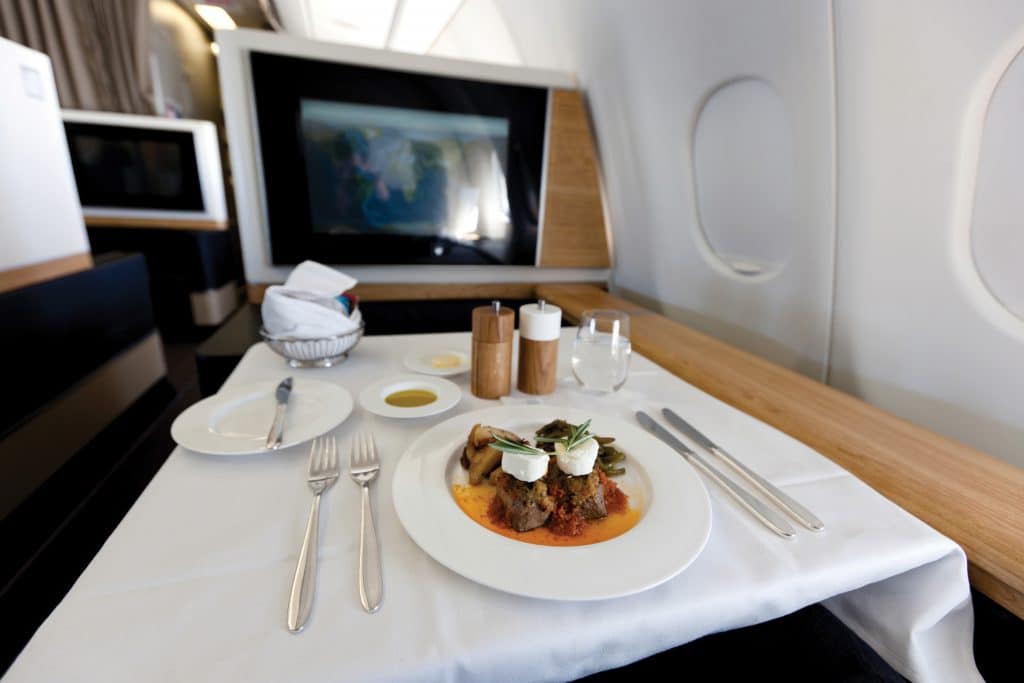On the Horizon: Commercial Air Travel Innovations
Commercial air travel is an industry that is continually evolving. Whether the goal is to control costs or increase customer comfort and satisfaction, the pressure to innovate is constant.
SOME OF THE SUGGESTED CHANGES to things like cabin configuration, in-flight services, and resource management are truly inspired and immediately become industry standards. Others leave customers and aviation experts scratching their heads a bit.

Either way, there are always new ideas on the horizon, and speculating about whether they will be adopted or abandoned is interesting for those who follow aviation. The Smithsonian recently shared a collection of innovative ideas from different companies that may, one day, find their way onto commercial flights.
Coming Soon?
Will any of the innovations below ever see large-scale implementation? Maybe a better question is, “Should they?” You be the judge.
STACKED SEATING. Airlines continue to look for ways to maximize every last square inch of cabin space in order to maximize carrying capacity and profitability. Airbus is doing more than just pondering it. The company has filed for a patent on a cabin configuration in which passengers are literally stacked on top of one another, with the top seats replacing the overhead bins. The company avoids calling this “stacked seating” and instead refers to it as “mezzanine seating.” A diagram seems to indicate that a benefit would be that people could completely recline without impacting (physically or metaphorically) fellow travelers.
STANDING SEATING. This oxymoron refers to an invention from an Italian company called Aviointeriors that creates a middle ground between standing and sitting. The Skyrider 2.0 has an angled seat that allows passengers to take some, but not all, of the weight off their feet. An advantage to airlines is that the seats can be closer together. Previous standing-type seats have not been approved by authorities, so it is unknown if this type will get the green light.
GERM FIGHTING SEATS. It is safe to say that a significant portion of the flying public has concerns about catching a bug from their fellow passengers. Recaro Aircraft Seating GmbH is seeking to address those concerns with the development of a new “self-cleaning” seat. The seat material contains a disinfectant designed to kill disease-causing germs.
VIRTUAL REALITY HELMETS. Some travelers enjoy the flying experience. Others can’t wait to be back on the ground and off the plane. For the latter, Airbus has designed and patented a virtual reality helmet they can don and be “transported” to another place while aloft.
ECO-FRIENDLY FAUCETS. Researchers at Cranfield University in the UK believe they have created a win-win with a lavatory faucet that produces a fine mist by atomizing water. The faucet has enough pressure to clean hands but uses 90 percent less water, which means planes can travel lighter and airlines can enjoy fuel savings.
DINING ROOMS AND DOUBLE BEDS. What Qatar Airways has dubbed the QSuite uses rotating seats and movable panels to allow a seating area to be turned into a private dining room. The seats can also be configured into beds.

CARGO HOLD WORK/PLAY/SLEEP SPACES. Another way that Airbus is looking to improve the commercial flying experience is by allowing passengers to access areas in the cargo hold designed for working, napping, or exercising. A significant benefit to parents of young children could be a play area where kids can burn off some energy.
Regardless of what happens with these ideas, it is good to know that companies around the world are working hard to make commercial flights more enjoyable for passengers and more profitable for airlines.




